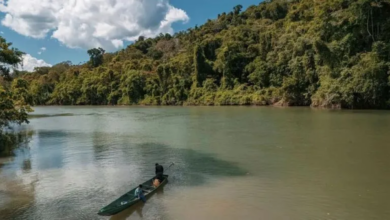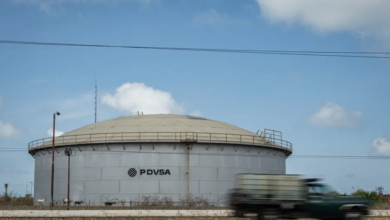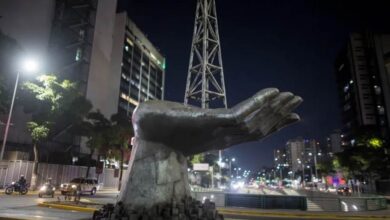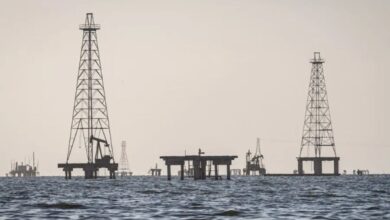Brazil Oil Auction Sparks Fresh Climate Clash Near Amazon Mouth

Nine energy giants have just scooped up 34 offshore blocks in Brazil, reopening an old argument in a new decade: can a country that promises climate leadership still bankroll its ambitions with crude drilled a day’s sail from the Amazon River delta?
A Gavel Strike, a Collective Gasp
Inside a chandeliered hall in downtown Rio, the auctioneer’s wooden hammer fell repeatedly until only one-fifth of the 172 blocks on offer had new owners—but what owners they were. Petrobras paired with ExxonMobil, Chevron cozied up to China’s CNPC, and Shell slid in alongside Equinor and Karoon. By midday, the National Petroleum Agency (ANP) had banked almost R $1 billion in signature bonuses and secured pledges for another R $1.46 billion in exploratory outlays.
Those numbers delighted the finance ministry but sliced the room in two. At one table, Petrobras executives toasted “the next great chapter” of Brazil’s offshore story. At another, environmental lawyers whispered about legal injunctions before the contract ink dried. “We walked in as one nation and walked out speaking different dialects of progress,” sighed a policy analyst from Fundação Getulio Vargas, the notebook still open to columns labeled GDP boost and existential risk.
The auction’s real headline was not the cash—Brazil has seen bigger windfalls—but geography. Half the winning bids sit along the Equatorial Margin, a stretch of uncharted blue that includes Foz do Amazonas, where the river pours five million cubic meters of sediment into the Atlantic every second. That plume, visible from space, now frames a debate first whispered in Brasília halls and shouted on talk radio: drill and prosper, or pause and protect?
Deep Drilling Meets Murky Waters
To understand the worry, spend a dawn with oceanographer Luísa Costa. She lowers a light sensor from a research boat off Amapá into six-meter-thick coffee-colored water. “Sunlight dies quickly here,” she explains. “If oil rises through this turbidity, microbes can’t break it down fast enough.” Her team at the University of Pará has cataloged coral-like reef mounds, pink river dolphins, and the last stronghold of West Indian manatees inside the very polygons now mapped for seismic ships. Ibama—the same federal agency that has stalled Petrobras’s license application for a decade—calls the zone “environmentally singular.”
Petrobras replies with engineering swagger: double shear-ram blowout preventers, satellite-guided dynamic-positioning rigs, a spill-response fleet on permanent standby. “Technology outruns fear,” one company VP told reporters, waving a brochure of subsea shut-off valves. Yet technology has blind spots. A 2023 modeling study by Federal University of Rio de Janeiro geophysicists found that cross-currents at the delta mouth could push a slick 700 kilometers north, brushing French Guiana before responders arrive. For coastal villages like Oiapoque, where fishing nets equal livelihood, those color-coded risk maps land like eviction notices.
Indigenous leader Aline Puxiponé said plainly outside ANP headquarters: “Oil money ends. Dead rivers do not recover.” Her protest chant barely penetrated the marble facade, but inside, junior energy traders refreshed Brent-price dashboards, calculating futures in increments of eighty-five dollars a barrel.

Dreams of Green Paid in Black
The Lula government frames the auction as a bridge: drill now, decarbonize later. Energy-transition economists at the University of Campinas peg Brazil’s clean-energy bill at US $35 billion annually through 2050—wind turbines in the Northeast, gigawatt-scale solar in the Cerrado, and new high-voltage lines to ferry it south. Pre-salt royalties currently cover perhaps a quarter of that tab. Mines and Energy Minister Alexandre Silveira argues that fresh crude will flush the treasury while green infrastructure ramps up.
Critics counter that the bridge looks suspiciously like a pier to nowhere. This spring, a peer-reviewed article in Ecological Economics warned that deep-water projects sanctioned after 2025 could struggle to break even if global oil demand peaks in the early 2030s. The stranded-asset specter haunts Petrobras’s balance sheet: decommissioning a single ultra-deep platform can cost more than Brazil’s annual science budget.
Onshore, the same company is championing an R $7 billion green-hydrogen hub at Pecém. “But hydrogen won’t bankroll itself,” a Petrobras director admitted, glancing at a slide headlined Cash Flow from New Barrels. The paradox is stark: Brazil needs oil money to quit oil. Whether that arithmetic adds up depends on the speed of electric-vehicle adoption in Beijing and Berlin, forces as distant yet decisive as the Atlantic swell on an Amazonian tide.
Licenses, Lawsuits, and the Tide Ahead
The inked contracts are only maps; the real confrontation lies in the paperwork still to be written. Each operator must deliver an Environmental Impact Report dense enough to pacify Ibama, the navy, and at least six coastal municipalities. Fishermen’s cooperatives demand upfront compensation funds; Indigenous councils hint at lawsuits, citing free, prior, and informed consent guarantees in Brazil’s constitution.
Meanwhile, global investors weigh the reputational cost. One ESG-oriented pension fund dumped Petrobras stock within hours of the auction. The share price nonetheless ticked up two percent—proof that, in markets, barrels still speak louder than tweets.
Veteran observers recall Norway’s 2013 Barents Sea saga: a jubilant lease sale followed by years of court battles, seismic delays, and partial withdrawals near polar bear habitat. Energy historian Tereza Villela suggests Brazil follow that script with mangroves replacing ice floes.
For now, nine companies hold 34 pieces of a seabed puzzle. Rig deployment could begin as early as mid-2027, putting the first exploratory drilling within sight of Belém’s COP30 banners. This juxtaposition promises awkward photo-ops unless the government can sell its narrative of “oil for renewables.” On the docks of Macapá, welders eye job boards, hopeful for pipeline contracts; upriver, biologists tag manatees, anxious about sonar blasts.
Also Read: Mexico and Central America Fear Crisis from U.S. Taxes on Remittances
Foz do Amazonas thus becomes more than a geography lesson; it is Brazil’s moral equation written in saltwater and bitumen. Drill and risk ecological riches that money can’t replace, or leave the oil beneath the mud and scramble for billions elsewhere. The tide will keep turning long after the last press release, but the decision made in these next few years will stain—or sustain—coastlines for generations. As the afternoon sun slants over Rio’s auction hall, one line from an Indigenous banner lingers: “Not all treasure is buried; some of it lives and breathes.” Whether Brazil’s newest prospectors see that truth before the first drill pipe kisses sediment remains the story still being written.




